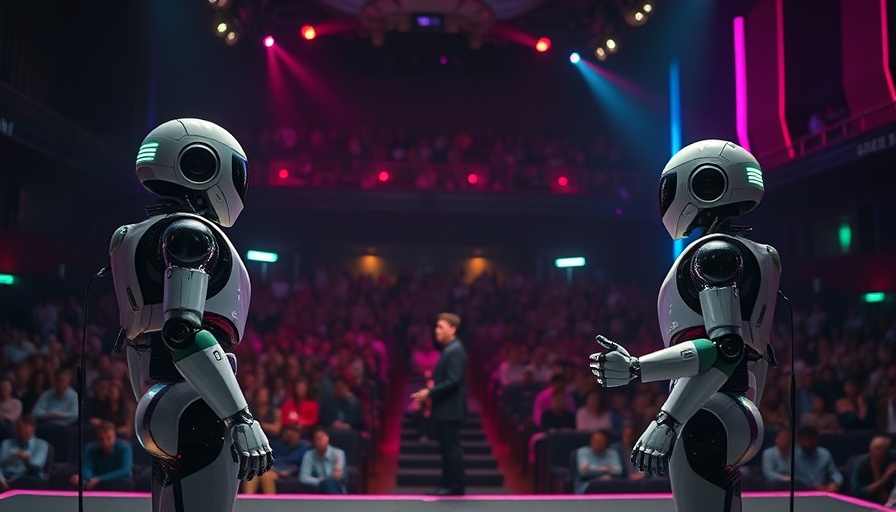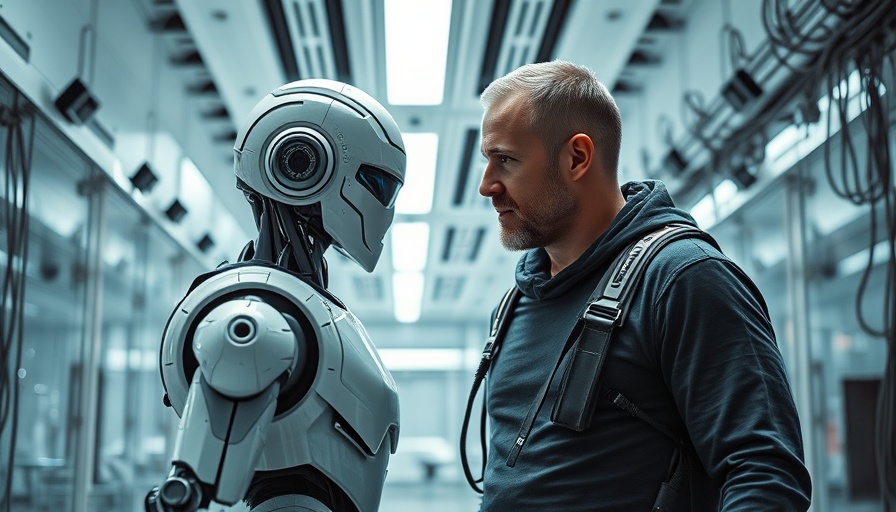
Revolutionizing Robotics: The Era of Human-like Machines
The world of robotics is witnessing a transformative leap, one that could redefine how we interact with machines in our everyday lives. Recently, Unitree’s G1 humanoid robot received a major upgrade with a system named Ammo, which enhances its capability to perform household tasks such as cleaning, organizing, and even loading the dishwasher with remarkable efficiency. This development signifies not just an evolution in robotics but a clear movement towards creating machines that can operate like human beings.
In 'Unitree Just Gave Its ROBOT a BRAIN and It’s Already Acting HUMAN + More AI & Robotics News', the discussion dives into groundbreaking advancements in robotics, sparking a deeper analysis of their implications for businesses.
Understanding Adaptive Motion Optimization
Ammo, or Adaptive Motion Optimization, is a sophisticated control system that enables the G1 robot to mimic human movements with an unparalleled level of accuracy. Traditional robots often struggle with complex motions due to rigid control systems, but Ammo employs a combination of reinforcement learning and trajectory optimization. This approach allows G1 not only to learn how to move but also to adapt dynamically to its surroundings. For instance, it can bend down to pick up toys or carefully reach for items on a high shelf without losing stability. The hybrid motion synthesis pipeline utilized by Ammo gives G1 a level of flexibility that was previously deemed impossible for machines.
Real-World Applications of Robotics
The implications of these advancements extend beyond mere demonstrations. Take Unitree's B2 firefighting robot dog, which has been redesigned to tackle emergency scenarios equipped with a water cannon capable of delivering foam at a distance of nearly 200 feet. This firefighting companion not only offers muscle but comes outfitted with advanced tech such as live video feeds and environmental mapping features that enable it to navigate hazardous conditions. These developments reflect a growing trend towards utilizing robots for essential services, particularly in environments that are risky for humans.
The Leap into Sports: Humanoid Robots Compete
Adding to the excitement, Lenovo has also made its mark in the humanoid robot sector with 'Liang No One,' a robot that showcased its ability to perform Tai Chi and answer business-related questions. This live exhibition represents real-world engagements where humanoid robots could soon find practical applications within sectors such as healthcare and elder care. Additionally, the upcoming World Humanoid Robot Sports Games set to take place at prestigious Olympic venues in Beijing this August will feature robots competing in events like track and field and gymnastics. Such events not only serve as competitions but as testing grounds for refining robotic motion algorithms.
Future Trends and Predictions for Robotics
As the realm of robotics advances, we are likely moving towards an era where the distinction between human-like actions and robotic performance becomes increasingly blurred. With units like Atom, which can walk and adapt its movement based on terrain imperfections, it is clear that the focus is shifting from mere mobility to comprehensive functionality. The integration of sophisticated AI tools increases the value such robots can offer, marking a significant shift in the landscape of personal and commercial robotics.
For business owners, the developments in robotics and AI present a multifaceted opportunity that can drive efficiency and innovation. Integrating these technologies into operations will not only enhance productivity but can set a company apart in a highly competitive market.
If you’re seeking to leverage the forefront of technology, consider exploring AI marketing software to augment your strategies and improve customer engagements. GET YOUR OWN AI ASSISTANT today to discover the immense potential that robotic and AI advancements can offer to your business.
 Add Row
Add Row  Add
Add 




Write A Comment